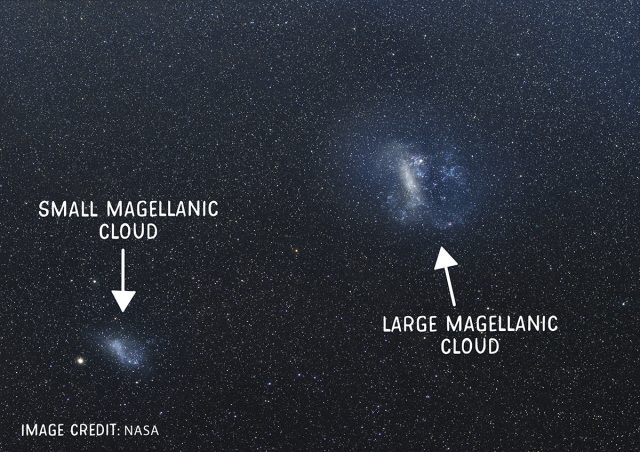Stargazing in country WA gives you an excellent opportunity to see something not normally visible under bright city lights.
The Large and Small Magellanic Clouds (sometimes abbreviated to LMC and SMC!) are galaxies outside of our own Milky Way Galaxy. From Earth they look like two faint clouds in the southern night sky, one larger than the other, and form a splendid spectacle. They are only seen from the Southern Hemisphere.
The best time to see the Magellanic Clouds is when there’s no moonlight. The best time this month is from 8.30 pm, between 15 to 26 January.
When you look directly south, you’ll see the Southern Cross very low to the horizon. So low, you may not see it. In the sky above, you should notice two very bright stars (Canopus and Achernar). The Magellanic Clouds are below these two stars and will look like small clouds.
There’s a lot to see in the Small and Large Magellanic Clouds. Binoculars will bring these two satellite galaxies to life and resolve hundreds of stars, dust and gas within these islands in space!
If you have a telescope, try to find 47 Tucanae or 47 Tuc for short. Its astronomy catalogue number is NGC 104. 47 Tuc is a globular cluster of up to half a million stars and is 15,000 light years from Earth.
The Magellanic Clouds are two of our closest galactic neighbours and were named after the Portuguese sailor Ferdinand Magellan who completed the first circumnavigation of Earth from 1519 to 1522, using the “clouds at night” to voyage into the southern seas.
The Large Magellanic Cloud is about 160,000 light years from Earth and the Small Magellanic cloud is a bit further at 200,000 light years away. That’s very close, astronomically speaking!
It’s mind-blowing to think that when we look at these galaxies today, that light we see, left those galaxies at around the time dinosaurs walked the Earth!
For more stargazing tips, visit www.astrotourismwa.com.au.








